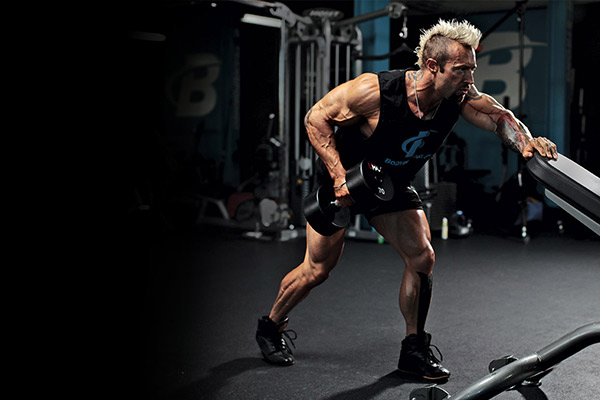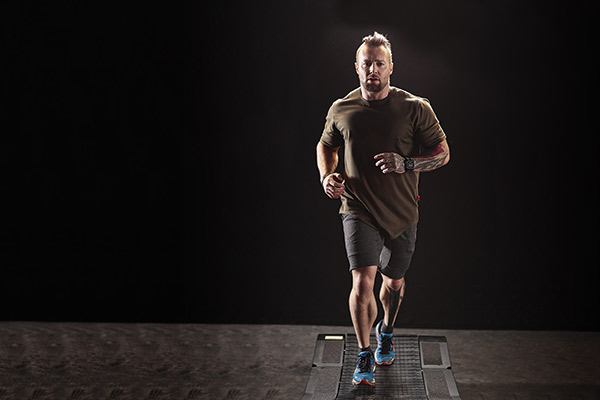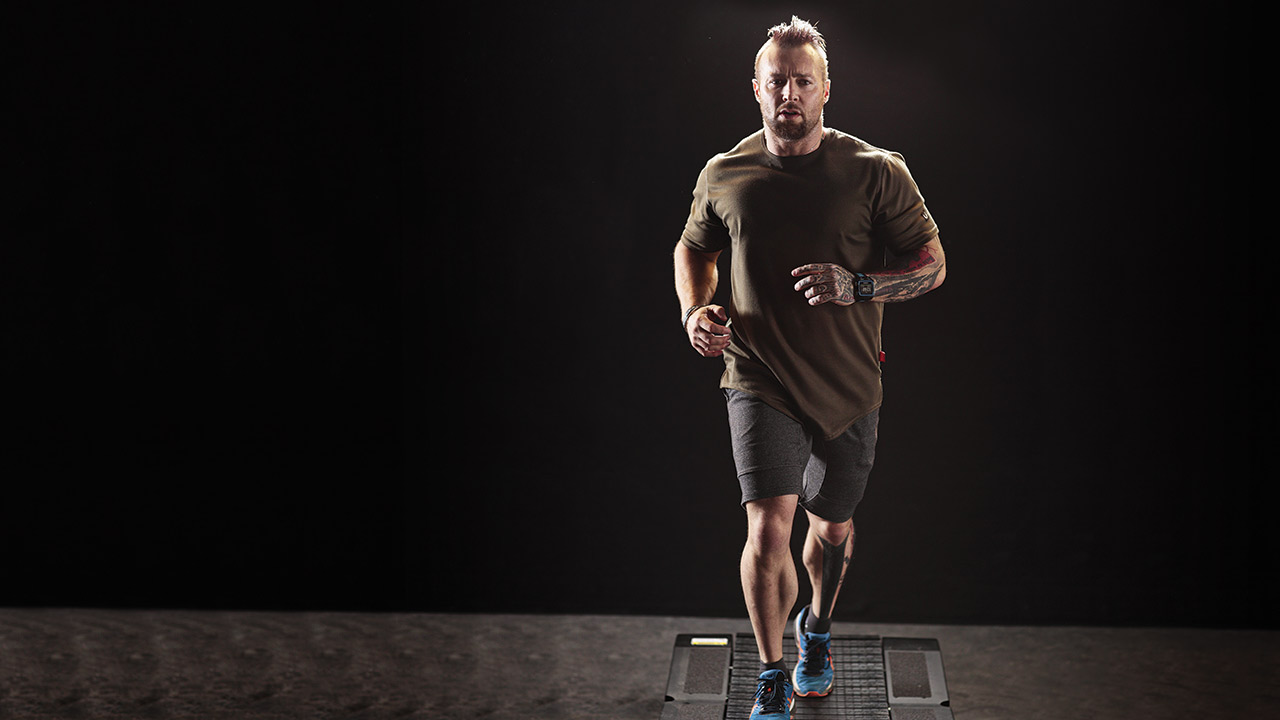Is it possible to train for a marathon and build muscle as a bodybuilder? It’s going to be one of the challenges of your life, but it can be done.
Here’s how bodybuilder Kris Gethin took on another challenge to master one of the longest-running events on the planet.
Kris Gethin is a nutrition consultant, trainer and CEO of Kaged Muscle.
A bodybuilder training to run a marathon. Why?
After completing my IRONMAN, I needed to set a new goal. The hole this would leave in my daily schedule would have been hard to replace, the only option was to set a new goal.
The soul requires purpose and without that depression, purposelessness and other ailments can set in. They say follow your heart. I truly believe in that saying.
Studies actually support this phenomenon. An ultra marathon is what I decided to commit to, helping me avoid the dark abyss.
Trail running was one strategy I used to build aerobic capacity for longer distance running because it’s less impactful on my joints, yet more physically demanding, making it the perfect conditioning tool for heavy athletes such as myself.
How a bodybuilder should eat to train for a marathon and fuel the machine
Ultra-marathons are another endurance event that bodybuilders aren’t supposed to be able to do.
To make it even more challenging for myself I committed to preparing for it while being vegetarian.
Fasting is something else I’ve added to make things even more demanding.
For almost 19 years I’ve not missed a single meal, eating within every three hours as part of my bodybuilding discipline.
While preparing for a recent colonoscopy I needed to fast beforehand, which gave me the idea: fasting between the hours of 9pm to 6pm the following day.
Supplements to preserve muscle mass while running for a marathon

To help preserve muscle tissue during fasts I consume fermented glutamine and fermented BCAAs within my water. Both contain anti-catabolic properties.
For flavor and improved hydration I also include HYDRA-CHARGE into my water, giving me five natural electrolytes from tender coconut water extract.
During my eating window I stick to egg whites, organic tofu, casein protein and Re-Kaged as my main vegetarian friendly sources of protein.
The slower releasing protein from the cold-processed micellar casein provide me with long lasting anti-catabolic amino acids, perfect for periods of fasting.
Following a vegetarian diet means I rely more heavily upon supplements to prevent deficiencies affecting performance and recovery.
I also take additional vitamin B12 for better central nervous system recovery and iron for better protein metabolism, selenium for reduced inflammation and vitamin K for improved calcium absorption.
I’ll also eat foods such as sauerkraut, kimchi and kefir because they’re abundant in natural fermented nutrients and probiotics, which support gut health, enhancing nutrient assimilation.
This is how I’m able to conquer endurance trail running and bodybuilding simultaneously.
What I absorb is what matters, not the amount taken in.
Combining bodybuilding training with marathon training
The training program for my ultra marathon preparation contains more running than the one followed for my IRONMAN event.
However, I am still using cycling and swimming to develop aerobic capacity while giving my joints a rest. All running is being done on trails on my Woodway Curve treadmill.
There is far less impact on my knees and hips using these environments rather than hard road surfaces or regular treadmills.
As running is a priority in the lead up to the ultra marathon, I’m not doing double cardio workouts each day because I have to save my legs for constant improvement during the three runs I complete each week.
This means that I’m also more strategic about exercises used on leg day in the gym to ensure my connective tissues and joints aren’t overly exposed to stress.
Pre-exhausting leg muscles before runs

Before a run, I might complete a hardcore leg workout or use the Stairmaster for 45 minutes, followed by a two-hour weekend run.
It’s common to complete a four-hour run on weekends when training for an ultra marathon, but by pre-fatiguing my legs first I’m able to expose them to enough stress without having to cover as many miles.
This reduces the stress on the connective tissues, suppressing inflammation and the risk of injury – very important for heavier-built athletes. This pre-exhaustion technique makes the trail runs more intense.
To equip my body for performance in these harsh environments I’ll use a CamelBak to carry fluid and food.
Once dehydration sets in, performance quickly plummets which is why hydration is pivotal to my success with every run.
The running workout and schedule for marathon training
This is how my first month of training looks as I prepare for the ultra marathon.
Each letter has the following meaning:
E – Easy
I – Intensity
T – Tempo
R – Recovery
Every workout should contain an additional one mile warm-up, one minute cool-down run.
Saturday: 8 x 400m I, 2 min E, Run 30 – 45 minutes after
Tuesday: Trail Run 60 minutes
Thursday: 6 x 400m E, 2 min T, 1 hour trail run
Saturday: 6 x 1600m T, 2 min E
Tuesday: 5 min T, 2 x 200m R, 2 x 400m E 10 min T
Thursday: 4 min E, 2 min T, 1 min E 1 min I, 4 min E, 1 min T, 4 E
Saturday: 5 x 800m I followed by 4 min E 3 x 200m R followed by 2 min E
Tuesday: 2 x 10 min T, 5 min E
Thursday: Bike 75 min or Stairs 45 min followed by 2 hour trail run
Saturday: Leg workout then 5 miles E
Tuesday: 45 second hill sprint. Walk back down the hill and repeat x 4, 5 min trail run E
Thursday: Swim then 10 miles E
For more articles about bodybuilding and training for a marathon, nutrition, and workouts, get TRAIN magazine direct into your inbox every month for free by signing up to our newsletter







